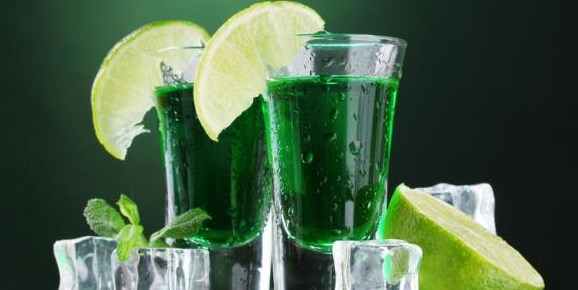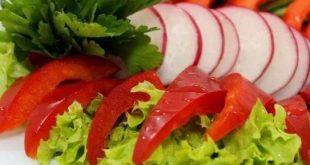ABSINTHE COCKTAILS: BRANDS AND SUBSTITUTIONS
Many of the cocktails in this book specify a particular absinthe. This reflects the specific flavor profile the recipe’s creator was going for, given the products that were available to him or her. You can substitute another well-made absinthe. When making substitutions, be prepared to adjust proportions of other ingredients if warranted by the new flavor profile.
Beyond absinthe, some of the cocktails in this book call for other spirits by brand name. Again, the requested brands reflect the specific flavor profile that the creator was going for. In all cases, you can substitute other brands. Keep in mind that quality does matter even in mixed drinks — for the best results, choose high-quality ingredients. That doesn’t mean you should take out a loan to stock your liquor cabinet. There are some well-made mid-shelf spirits that have managed to keep relatively low prices. Just research your purchases before you buy to make sure you’re getting the most quality for your money.
Stocking up on spirits and other cocktail ingredients can be expensive, but as long as you’re drinking responsibly— please do—each bottle should go a long way. One method for keeping costs down is to shop for just one cocktail at a time. Pick a cocktail, gather the ingredients, and, when you’re ready to try another one, browse the book for a recipe that calls for some of the same spirits as the first, so you don’t have to buy a whole new set of ingredients.
ABSINTHE COCKTAILS: MEASURING ABSINTHE
Because the cocktails in this book are meant to showcase absinthe, it might seem peculiar that many of them call for only a few drops or a fraction of a teaspoon of absinthe.
Resist the urge to blindly add more before you’ve tasted the cocktail. Because premium absinthe can be robust and flavorful, you might be surprised what a few drops can do.
Many bartenders treat absinthe like bitters, measuring one drop at a time with an eye dropper. Small glass bottles with droppers can be purchased online or at herb-supply stores. You can also repurpose old dropper bottles that once held essential oils or medicines—just be sure to wash them well first to get rid of any die-hard scents.
BITTERS
The bitters category has swelled with new products in recent years. In addition to old-fashioned aromatic bitters, like the ubiquitous Angostura, there are bitters with dominating notes of celery, mint, and even chocolate.
Bitters are to cocktails what salt and spices are to food.
Feel free to spice your cocktails to taste and to experiment with different bitters brands or flavors. But do so with a light hand; sometimes the difference between one dash and two is a ruined cocktail.
SWEETENERS
The most common sweetener used in this book is simple syrup, a solution of equal parts sugar and water. You can use any type of crystallized sugar, but darker, less refined sugars yield a richer syrup. Try Demerara or turbinado sugar (the widely available Sugar in the Raw brand is an example of the latter) or others made from pure dehydrated or evaporated cane juice. To make simple syrup, combine one part sugar and one part water in a saucepan over low heat, stirring frequently until the sugar is dissolved. Remove from the heat and let cool to room temperature. Pour the syrup into a glass bottle with a stopper and store it in the refrigerator.
It should keep well for up to two weeks. To prolong the shelf life, add half an ounce of vodka for every cup of syrup.
It’s easy to create flavored syrups by adding herbs, fruit, nuts, or spices to simple syrup. Grenadine, a pomegranate flavored syrup, is used in some recipes in this book. You can buy grenadine at spirits shops and many grocery stores, but homemade grenadine is a real treat.
Honey and agave nectar are two celebrated sweeteners that can be used in cocktails that call for simple syrup. Create a pourable syrup by thinning the viscous sweeteners with water .
Note that honey and agave have distinct flavor profiles and, if used in place of simple syrup, can change a cocktail dramatically. Both are sweeter than table sugar and should be used in smaller amounts.
ADJUSTING FOR TASTE
Every palate is different, and your taste buds may prefer a cocktail a little sweeter, or with a bit less of this or that, than what was intended. When experimenting with proportions, it’s a good idea to be conservative—start with small doses and add more to taste.
CITRUS PEEL GARNISHES
Garnishes are not just decoration—they complement a cocktail’s flavors and help tie the whole drink together.
In this book, and in the cocktail world at large, the most common garnishes are citrus peels. Fresh lemons, limes, oranges, and grapefruits hold sweet and tangy flavor-packed oils in their skins. The idea is to manually extract the oil by squeezing or twisting a swath of peel over the surface of a cocktail. After distributing the oils into the drink in this way, you may discard the used peel or drop it into the glass for further flavoring and decoration. Most recipes specify which action to take, but, in practice, it’s always a matter of personal preference.
You can make citrus peel garnishes with a channel knife if you prefer a long thin strip; a wider garnish knife or citrus peeler if you’re going for a wider ribbon of peel; or a standard bar knife to cut a swath of peel to your desired shape. For the latter free-cut method, first lay a whole, washed, uncut citrus fruit on a cutting board. Slice off both ends, then hollow out the fruit with a serrated knife and a spoon, saving the flesh for juicing or another purpose, leaving only the shell. Make a lateral cut through the peel, from one open end to the other, then flatten it, skin-side down, on a cutting board. Use a knife to scrape off any remaining bits of bitter pith. Cut the peel into strips, squares, or decorative shapes. A swath two inches in length and half an inch wide is usually sufficient, but you can cut larger pieces for dramatic effect. For the juiciest peels, choose the freshest citrus you can find, with plump, shiny skin. Store at room temperature and use within a week.
GLASSWARE
Because absinthe has so much history, it’s fun to use oldtimey glassware. Lovely vintage cocktail glasses are surprisingly easy to find at thrift stores, estate sales, antiques shops, or, if you’re lucky, your grandmother’s china cabinet. You might occasionally score a matching set, but it’s also fun to collect distinctive pieces for an eclectic effect. In this book, when a recipe calls for a stemmed glass, a coupe or saucer glass is recommended, if only for the cool retro look (think Nick and Nora Charles). These are usually short with wide, shallow bowls and hold 3 to 6 ounces of liquid. Vintage specimens abound, and reproductions are making their way onto the shelves of the big kitchen retailers. In a pinch, any stemmed glass will do, from a wineglass to those V-shaped martini glasses that were so ubiquitous in recent decades.
Rocks glasses, also called tumblers, buckets, lowballs, or old-fashioneds, are stemless and sturdy. They’re the go-to glasses for short drinks served over ice (“on the rocks”) as well as bold Sazerac-style drinks that, despite being served neat (without ice), are decidedly too muscular for dainty stemmed glasses. Rocks-style glasses are usually available in two sizes: single (6 to 8 ounces) or double (10 to 12 ounces). Take your pick based on the volume of the drink and what feels good in your hand.
When a recipe calls for a tall glass, any tall, narrow vessel will do. They’re sometimes sold as chimneys, highballs, or Collins glasses, and they generally hold between 10 and 16 ounces.
Some fizzes call for a juice glass—the kind that’s at home on the breakfast table. These are similar in shape to a highball but slightly smaller, holding between 5 and 8 ounces. Ball and Kerr make 8-ounce jelly jars that work as farm table–chic alternatives.
ABSINTHE ACCOUTREMENTS
When preparing a traditional glass of absinthe, it’s fun to have the right paraphernalia. Classic absinthe glasses—which were typically stemmed, with tapered bowls, and sometimes featured bulbous reservoirs that served as dosage guides—are obtainable at antiques shops and stores that specialize in vintage barware. As absinthe has regained popularity, reproductions of classic vessels have started to pop up in kitchen stores. Absinthe spoons were ornate, sometimes plated in silver, and were designed to serve as strainers, resting across the top of an absinthe glass, holding a sugar cube or two. Originals can still be found, and reproductions are becoming commonplace, so you can go vintage or faux, depending on how hard you want to look. The crown jewel of the traditional absinthe ritual is the fountain. If the spoons were ornate, the fountains—with their etched glass bowls and plated-brass spigots—were over the top, their resplendence a testament to absinthe’s exalted status. Originals are still available at a price, but well-made reproductions also make great showpieces.
 МЛМ Лидер сайт — блог лидера Орифлейм МЛМ Лидер — сайт Константина Харченко mlm leader Oriflame
МЛМ Лидер сайт — блог лидера Орифлейм МЛМ Лидер — сайт Константина Харченко mlm leader Oriflame



